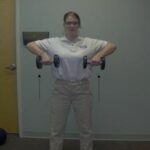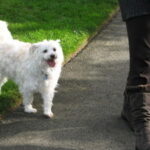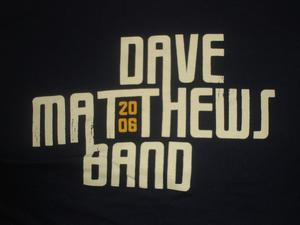It’s something that happens to all of us at one point or another. Walking the dog, doing construction, playing sports, really almost any kind of physical activity poses the threat of a pulled muscle somewhere on your body. So how do you know whether or not that sore shoulder or thigh or calf just suffered a strain? This article will discuss signs that tell you if you have a pulled calf muscle, and these signs can also be applied to other areas of your body.
There are actually two muscles which comprise the calf muscle: the Gastrocnemius, the largest of the two muscles, and the Soleus muscle, the smaller muscle under the Gastrocnemius which is connected to your Achilles’ tendon. Both of these muscles have the potential to be pulled. When you pull a muscle, you actually tear it, as muscles lack the elasticity to undergo severe strain and remain in tact. You might not know you tore your calf muscle when it happens. Sometimes, if the strain is light, it could show up the next day if you try to use it at all. Sometimes, though, the strain presents itself immediately, and it’s entirely painful.
If you feel a sudden pain at the junction between the Gastrocnemius and the Soleus muscle that is a definite sign that you have over-reached the boundaries of your calf muscle. Also, if you have trouble contracting your muscle, or if you can’t stand on your tiptoes without a sharp pain, that too is a sign of strain. Sometimes there might even be bruising or swelling where the tear occurs, and if you can’t stand to push against something with your calf muscle, that is a big sign that you might have torn a muscle.
Differentiating between which muscle you’ve pulled can be difficult sometimes, as pain tends to spread from ground zero to the surrounding areas. If you’ve pulled your Gastrocnemius, you’ll feel pain above your knee as well as below it. If you’ve pulles your Soleus muscle, you’ll feel pain below the knee and into your Achilles’ tendon.
The most common place a muscle strain occurs on the calf is the MTJ, or muscular tendinous junction, that place between the Gastrocnemius and the Soleus. To avoid muscle strains, all you need to do is stay hydrated and perform dynamic and static stretches to prepare your muscles for activity. While there are several types of stretches, these two are proven the most efficient for most types of activities. Dynamic stretching involves the gentle movement of the limbs to get your blood flowing and your muscles ready to move. An example of this would be gentle arm or leg swings, stretching your neck (please do not roll your neck all the way around as that is bad for your joints), back, or other muscle in a controlled and active manner. Static stretching, as the name indicates, involves no movement at all, and should be used to create flexibility in your muscles. An example would be doing wall pushes which stretch the Gastrocnemius. A wall push is an exercise in which you press your palms flat against a wall, bend one knee, and straighten the other leg to stretch the calf muscle to its limit. Mixing these two types of stretching exercises increases the blood flow and flexibility of your muscles.
It’s always best to stretch your muscles before any serious activity, but if you can’t and you need help with your pulled muscle, see a physical therapist, or search for home remedies for your muscle strain.
Sources:
http://www.mountsinai.org/Other/Diseases/Pulled%20calf%20muscle






